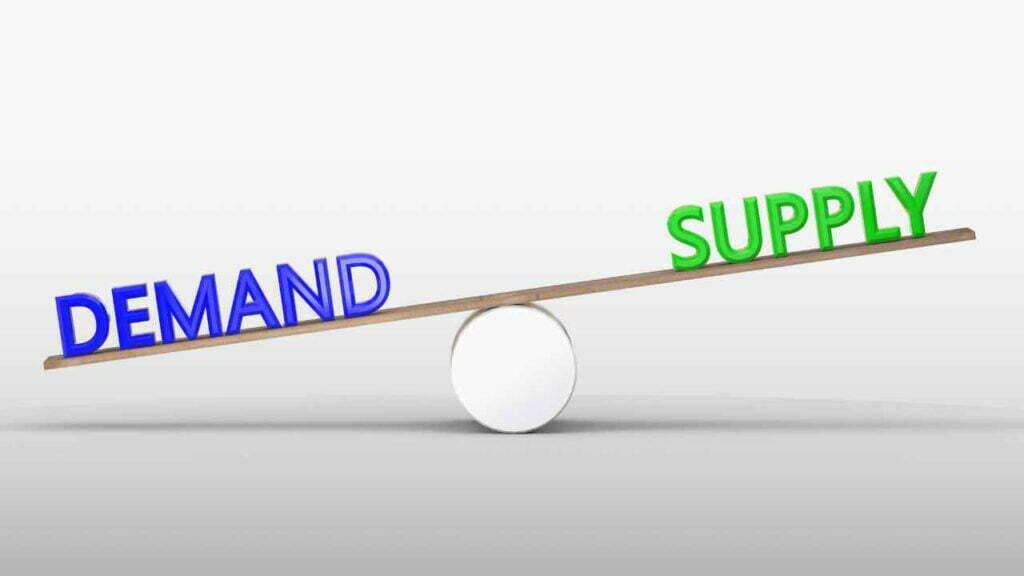The Importance of Balance of Trade in International Economics
Definition of Balance of Trade
Balance of trade refers to the difference between a country’s exports (goods and services sold to other countries) and imports (goods and services bought from other countries). A positive balance of trade, also known as a trade surplus, occurs when a country exports more than it imports. A negative balance of trade, also known as a trade deficit, occurs when a country imports more than it exports.
Importance of Balance of Trade in International Economics
The balance of trade is an important indicator of a country’s economic performance and its position in the global economy. It provides information on a country’s ability to produce and sell goods and services, as well as its dependence on foreign products. A country with a positive balance of trade is seen as having a strong economy and a competitive advantage in international trade, while a country with a negative balance of trade is seen as having a weaker economy and a trade deficit. Additionally, the balance of trade also provides insights into a country’s trade relations and its position in the global economy.

Components of Balance of Trade
- Exports: Exports refer to the value of goods and services sold by a country to other countries. Exports can include physical goods such as manufactured products, agricultural products, and raw materials, as well as services such as tourism, transportation, and consulting.
- Imports: Imports refer to the value of goods and services bought by a country from other countries. Imports can include consumer goods, intermediate goods (used in the production of other goods), and capital goods (used in the production process).
- Trade balance: The trade balance is the difference between a country’s exports and imports. A positive trade balance, also known as a trade surplus, occurs when a country exports more than it imports. A negative trade balance, also known as a trade deficit, occurs when a country imports more than it exports. The trade balance is an important indicator of a country’s economic performance and its position in the global economy.
Factors Affecting Balance of Trade
- Exchange rate: The exchange rate is the value of a country’s currency in relation to other currencies. A country’s exchange rate can affect its balance of trade by making its exports more or less expensive to foreigners, and by making imports more or less expensive to domestic consumers. A depreciated currency makes exports cheaper and more competitive in the global market, which can lead to an increase in exports, and a trade surplus. On the other hand, an appreciated currency makes imports cheaper, which can lead to an increase in imports and a trade deficit.
- Economic growth: Economic growth can affect a country’s balance of trade by increasing or decreasing demand for goods and services. During periods of economic growth, domestic demand for goods and services increases, which can lead to an increase in imports and a trade deficit. On the other hand, during periods of economic downturn, domestic demand decreases, which can lead to a decrease in imports and a trade surplus.
- International trade agreements: International trade agreements, such as free trade agreements (FTAs) and customs unions, can affect a country’s balance of trade by removing tariffs and other trade barriers. This can increase the competitiveness of a country’s exports, leading to an increase in exports, and a trade surplus.
- Tariffs and non-tariff barriers: Tariffs and non-tariff barriers, such as quotas and embargoes, can affect a country’s balance of trade by making its exports more expensive, and its imports cheaper. This can lead to a decrease in exports and an increase in imports, resulting in a trade deficit.
- Productivity and competitiveness: A country’s productivity and competitiveness in the global market can affect its balance of trade by making its exports more or less competitive. A country with a high level of productivity and competitiveness will be able to produce goods and services at a lower cost, making them more competitive in the global market, leading to an increase in exports and a trade surplus.
Impact of Balance of Trade on the Economy
- Positive impact on economic growth: A positive balance of trade, or trade surplus, can have a positive impact on economic growth. Exports generate income for a country, which can be used to invest in domestic industries and infrastructure, leading to economic growth. A trade surplus also indicates that a country is producing more goods and services than it consumes, which can lead to an increase in GDP and economic growth.
- Negative impact on economic growth: A negative balance of trade, or trade deficit, can have a negative impact on economic growth. A trade deficit indicates that a country is consuming more goods and services than it produces, which can lead to a decrease in GDP and economic growth. Additionally, trade deficit may lead to higher external debt and inflation which may further impact the growth.
- Impact on currency value: The balance of trade can also have an impact on a country’s currency value. A trade surplus can lead to an appreciation of the currency, making exports more expensive and imports cheaper. On the other hand, a trade deficit can lead to a depreciation of the currency, making exports cheaper and imports more expensive.
- Impact on employment and inflation: The balance of trade can also have an impact on employment and inflation. A trade surplus can lead to an increase in employment and a decrease in inflation, as more jobs are created in exporting industries and the increased demand for domestic goods and services can lead to lower prices. On the other hand, a trade deficit can lead to a decrease in employment and an increase in inflation, as jobs are lost in the exporting industries and the increased demand for imports can lead to higher prices.

Balance of Trade in India
- Overview of India’s balance of trade: India’s balance of trade has been in deficit for a long time. The country’s imports have been consistently higher than its exports, leading to a trade deficit. India’s main exports include textiles, engineering goods, petroleum products, gems and jewelry, and agricultural products. Its main imports include crude oil, gold, and electronic goods.
- Factors affecting India’s balance of trade: Factors affecting India’s balance of trade include the exchange rate, economic growth, international trade agreements, tariffs and non-tariff barriers, and productivity and competitiveness. For example, India’s high dependence on imported crude oil has a significant impact on its trade balance as the country imports a large proportion of its energy needs. India also has a relatively high tariffs on imports which makes imported goods more expensive and less attractive for consumers, this can also make exports less competitive in the global market.
- Government policies to improve balance of trade: Government policies aimed at improving India’s balance of trade include increasing exports, reducing imports, and promoting domestic production. The Indian government has implemented policies such as Make in India and Digital India to boost domestic production and exports. The government has also introduced schemes such as the Merchandise Exports from India Scheme (MEIS) to provide incentives for exporters, and has reduced tariffs on some imports to make them more affordable for domestic consumers.
- Current challenges and future prospects: India’s balance of trade continues to be a challenge due to factors such as high crude oil prices, and a high trade deficit with China. However, with the government’s efforts to boost domestic production and exports, and the increasing opportunities in the global market, the future prospects for India’s balance of trade are expected to improve.
Conclusion
- Summary of key points: The balance of trade is an important indicator of a country’s economic performance and its position in the global economy. It is the difference between a country’s exports and imports and a positive balance of trade is known as a trade surplus while a negative balance of trade is known as a trade deficit. Balance of trade is affected by a number of factors such as exchange rate, economic growth, international trade agreements, tariffs and non-tariff barriers, and productivity and competitiveness. The balance of trade can have a positive or negative impact on a country’s economic growth, currency value, employment, and inflation.
- Future prospects for the balance of trade in international economics: The balance of trade will continue to be an important indicator of a country’s economic performance in the future. With the increasing globalisation, the balance of trade will be affected by various global factors such as changes in the global economy, technology, and international trade policies.
- Recommendations for addressing the challenges facing the balance of trade: To improve the balance of trade, some recommendations include:
- Enhancing productivity and competitiveness of domestic industries
- Promoting exports through schemes and incentives
- Reducing dependency on imported goods, particularly energy
- Improving infrastructure to support trade and investment
- Encouraging Foreign Direct Investment
- Continuously monitoring the global economic conditions and taking into account the international trade environment while formulating trade policies
- Improving predictability of trade policies and removing trade barriers.

The Knowledge Hub is intended for a wide range of audiences, including students, professionals, and anyone who is curious about the world and wants to expand their knowledge base. It can be useful for research, education, and personal curiosity. The Knowledge Hub is constantly updated to reflect the latest information and insights, and our visitors are encouraged to check back often for new content. Thank You.
We also have live online classes where we teach 2 courses which are given below. Please go through them and if interested you can take a Free Trial Class.






